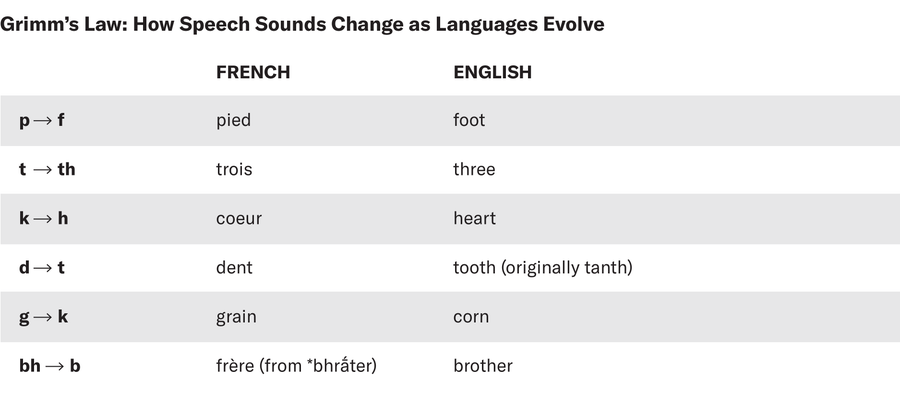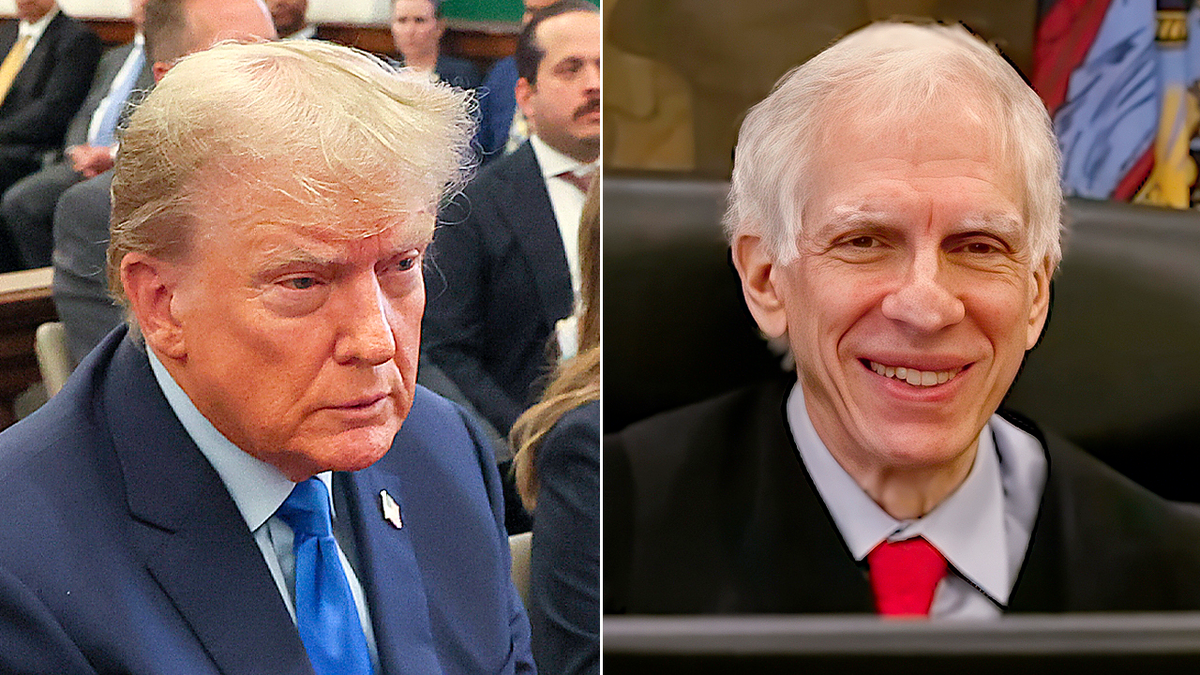Almost half of all people in the world today speak an Indo-European language, one whose origins go back thousands of years to a single mother tongue. Languages as different as English, Russian, Hindustani, Latin and Sanskrit can all be traced back to this ancestral language.
Over the last couple of hundred years, linguists have figured out a lot about that first Indo-European language, including many of the words it used and some of the grammatical rules that governed it. Along the way, they’ve come up with theories about who its original speakers were, where and how they lived, and how their language spread so widely.
Most linguists think that those speakers were nomadic herders who lived on the steppes of Ukraine and western Russia about 6,000 years ago. Yet a minority put the origin 2,000 to 3,000 years before that, with a community of farmers in Anatolia, in the area of modern-day Turkey. Now a new analysis, using techniques borrowed from evolutionary biology, has come down in favor of the latter, albeit with an important later role for the steppes.
On supporting science journalism
If you’re enjoying this article, consider supporting our award-winning journalism by subscribing. By purchasing a subscription you are helping to ensure the future of impactful stories about the discoveries and ideas shaping our world today.
The computational technique used in the new analysis is hotly disputed among linguists. But its proponents say it promises to bring more quantitative rigor to the field, and could possibly push key dates further into the past, much as radiocarbon dating did in the field of archaeology.
“I think that linguistics might be in for a sort of equivalent of the radiocarbon revolution,” says Paul Heggarty, a historical linguist at the Pontificia Universidad Católica del Perú in Lima, and a coauthor of the new study; he described the computational approach in the 2021 Annual Review of Linguistics.
Revealing dead languages
To understand what’s going on, it helps to look at how the study of Indo-European languages developed.
During the 16th century, as travel and trade put Europeans in touch with more foreign languages, scholars became increasingly interested in how languages related to one another, and where they might have originated.
In the late 18th century, Sir William Jones, a British judge in India, noticed similarities in vocabulary and grammar in Sanskrit, Latin and Greek that couldn’t have been coincidental.
For instance, the English word “father” is “pitar” in Sanskrit and is “pater” in Latin and Greek. “Brother” is “bhratar” in Sanskrit, “frater” in Latin. Although Jones wasn’t actually the first to notice the similarities, his pronouncement that there must be a common origin helped to spur on a movement to compare languages and trace their relationships.
A major advance came in 1882, when Jacob Grimm formulated what would later be called Grimm’s Law. Grimm is best known today as one half of the Brothers Grimm, who collected and published Grimm’s Fairy Tales. But in addition to being a folklorist, Jacob Grimm was also an important linguist.
Grimm showed that as languages developed, sounds changed in regular ways that could help make sense of how languages were related. For instance, the Indo-European word for “two” was “dwo.” But “dwo” was one of a number of words whose initial “d” changed to “t” as it passed into the common ancestor of English and German. Later, the “t” sound became “ts” in an ancestor to modern German. So the Indo-European word “dwo” became “two” in English and “zwei” (pronounced “tsvai”) in modern German. Other words starting with the “d” sound behaved similarly. Scholars discovered a lot of these sound shift patterns, each obeying different rules, as one language gave birth to another.
Together with these sound shifts, linguists also study how words are formed, such as the way that English adds an “s” to make a word plural. They also look at how words are arranged, such as the way that English puts subjects before verbs and verbs before objects. And, of course, they look at shared vocabulary. By comparing all these features of different languages, linguists are able to map how languages descended from one another, and to place them in family trees that show their relationships.
Today, linguists are in broad agreement on the basics of Indo-European language groupings and how they are related to one another. They agree that the original language, which they call Proto-Indo-European, split into 10 or 11 main branches, two of which are now extinct.
They also generally agree on where to put languages within the main branches. For instance, they know that the Italic branch gave us Latin, which itself developed into the Romance languages such as French, Spanish and Italian. The Germanic branch developed into languages including German, Dutch and English. And the Indo-Iranian branch resulted in languages like Hindi, Bengali, Persian and Kurdish.
Ancestral lifestyles
By tracing changes in language backwards towards their sources, linguists have deduced many of the basic characteristics of the original Proto-Indo-European language, including some vocabulary, how words were formed and some idea of how they were pronounced. And many linguists think they have even found hints of how the first Proto-Indo-Europeans might have lived.
For example, the Proto-Indo-European language had a word for axle, two words for wheel, a word for harness-pole and a verb that meant “to transport by vehicle.” Archaeologists know that wheel and axle technology was invented about 6,000 years ago, which suggests that Proto-Indo-European can’t be any older than that. If it was older — in other words, if it had started to split into other languages before it had words for axles and harness-poles — then its daughter languages would have had to invent their own words for these things. The fact that they use the same words suggests that the split started after these technologies were developed.
Other words in the language suggest that the first Indo-European speakers were probably familiar with horses, cattle- and sheepherding, dairy, wool, honey and mead. They seem to have had chiefs (the word “reg” gave us our English word “regal”) and may have been patriarchal (they had words for “in-laws” that applied only to the bride’s side of the family, suggesting that the husband’s family was considered primary).
Many linguists think the vocabulary paints a picture of pastoralists — nomadic herders — who used horses and wagons. Combined with genetic evidence that people dispersed rapidly out of the steppes into central Europe about 5,000 years ago, they conclude that Indo-European languages moved out of the steppes and spread with the pastoralists.
In 1987, though, the Cambridge archaeologist Colin Renfrew rejected a pastoralist origin for Indo-European. Renfrew reasoned that the dramatic spread of Indo-European languages must have required a bigger push than could be provided by contact with ragtag groups of nomadic herders. For a major shift in which a single language grew to dominate a region stretching from Ireland to India, Renfrew argued, you needed a more powerful force.
He found it in the spread of farming. Simply put, as people took up farming their population grew more quickly than that of their hunting and gathering neighbors. As farming expanded, the languages moved with it. Archaeological evidence shows that farming had begun moving out of Anatolia about 3,000 years earlier than the spread of pastoralists out of the steppe. So, Renfrew concluded, farmers were the real force behind the spread of Indo-European. By the time the pastoralists started migrating, the farmers they met were already speaking an Indo-European language.
Renfrew largely dismissed the linguistic reasoning that the steppe hypothesis was based on. The commonality of words for wheel, wagon-pole and the like, he said, can be explained by parallel shifts in which different languages draw on the same base meaning when creating a new word.
For instance, the original meaning of the Proto-Indo-European word for wheel seems to have meant something like circle, or turn. Different languages might have inherited that basic meaning and drawn on it independently when creating their own words for wheel.
Likewise, if the word “thill” for wagon-pole had a more general meaning of stick or pole, it could have been adopted to mean wagon-pole by more than one language.
Searching for rigor
Arguments like these led a few linguists to try a more quantitative approach to reconstructing the history of Indo-European. For this, they borrowed a technique often used in biology to build evolutionary trees based on measurable traits. Their approach, called computational phylogenetics, treats languages as evolving systems, similar to biological organisms. But instead of tracing changes in DNA, as computational phylogenetics in biology does, the technique in linguistics traces words. Specifically, most analyses have looked at patterns in words that mean the same thing in different languages, and that can be traced back to the same Proto-Indo-European root. The more similar those patterns are, the more closely related languages are generally thought to be.
While this may sound like the language trees long used by linguists, the trees produced by computational phylogenetics are far less subjective: The method is governed by strict algorithms and explicitly stated rules.
In essence, the computer program works by drawing a language tree and estimating the probability that it is correct given all the data and assumptions. Then the program makes a single change to that tree and compares the probability scores, keeping whichever tree is more probable. The process is repeated, sometimes millions of times, resulting in a set of most-probable trees.
These trees show how closely related languages are to one another. To estimate timings — when languages originated and diverged from one another — the researchers also provide the computer program with dates for when they think different languages existed, based on the best estimates of experts. Latin, for instance, existed around 2,050 years ago, Old Icelandic about 800 years ago, and Mycenaean Greek about 3,350 years ago. The computer program uses these anchor dates to create its timing estimates, including a date for the ultimate origin of Indo-European.
The results can be combined with the historical record of where languages were spoken to help figure out a likely map of how they spread geographically. And the dates can be combined with the archaeological record and studies of ancient human DNA to see if the Indo-European language lines up with an early farming origin, or a later steppe origin.
Contradictory results
One such analysis, published in 2012, pointed to an origin of Indo-European about 9,000 years ago in Anatolia, supporting the theory that Indo-European originated with farmers. But just three years later, a different team used much the same data to conclude that the origin was just 6,000 years ago on the steppes, supporting the opposite view that pastoralists were the first Indo-European speakers. How could the two teams reach such different conclusions from such a similar list of words?
Heggarty delved into the problem and discovered that the issue lay with the dataset used for both of these earlier analyses, which was largely based on one originally put together in the 1960s by Isidore Dyen, a linguist at Yale University. Dyen’s dataset had not been a problem for the research Dyen was doing, but when used for the new computational technique, it was throwing off the findings. Computational phylogeny works best when there is a single word for every root meaning researchers are interested in tracing. But the meaning “dirty,” for instance, can have a number of synonyms in English, including “filthy” and “unclean.” The Dyen dataset included synonyms like these for some words in some languages, but not for others.
Including any synonyms at all, Heggarty realized, made the dataset harder for the new computational technique to use. But having an inconsistent number of synonyms — more for some languages, fewer for others — really threw the calculations off. “I said, ‘Look, we have got to do this database completely again, from scratch. We have got to do much better,’” Heggarty says.
So he and his colleagues chose 170 core meanings they wanted to trace — basic words you would expect languages to preserve, such as words for counting numbers, body parts, colors and things like house, mountain, laugh and night. Then they brought together a team of more than 80 linguists and had them determine, for each of 161 Indo-European languages, the primary word for each concept. Only that word, and none of the synonyms, went into the analysis.
“We made a highly consistent database out of it, in a way that nobody has ever done before,” Heggarty says. “And we did a lot of analysis to make sure we chose the most appropriate meanings. If you don’t do your due diligence, your results won’t be valid.”
When Heggarty’s team reran the analysis with this new database, their findings broadly agreed with the earlier, farmer-origin theory, locating the origin squarely in Anatolia about 8,000 years ago. From there, some branches of the language moved eastward and gave rise to languages including Persian and Hindustani. Other branches moved west to eventually develop into Greek and Albanian.
But the analysis also recognizes the steppes as playing an important role as a secondary homeland for most European languages: After one branch traveled northward from Anatolia to the steppes, it radiated from there into northern Europe, giving birth to Germanic, Italic, Gaelic and other European language families.
Not convinced
Mainstream historical linguists remain skeptical, however — of computational phylogenetics in general and the new result in particular. The main criticism is that the approach relies mostly on vocabulary and ignores word sounds and structures, such as the stems, prefixes and suffixes that make up a word. And the critics say that word meanings by themselves don’t give enough information to draw firm conclusions, no matter how sophisticated the computation is.
Thomas Olander, a historical linguist at the University of Copenhagen, says that the problem with depending on related words is that languages borrow words from one another all the time. Just seeing that there are words in common between two languages, then, doesn’t mean the languages come from the same parent. The fact that English speakers now use the word “sushi,” for example, doesn’t mean that English and Japanese are related languages.
Instead, most linguists tend to trust sound shifts — such as the “dwo” – “two” – “zwei” shift — along with similarities in the structures of words that can indicate which language they originated in. Word meanings can also be part of that mix, but they can’t do it alone, Olander says.
Heggarty’s tree has other problems, as well. For instance, it shows Celtic languages as being closely related to Germanic languages. But Olander says most historical linguists think Celtic languages are much more closely related to Italic languages.
“It’s something that, again, is surprising,” Olander says. “I think ‘surprising’ could be translated to ‘It probably means that that their method is wrong.’”
Olander thinks it is far more likely that Celtic and Germanic branches coexisted closely for a long time and loaned one another words. An analysis based solely on shared word meanings shows them as more closely related than they actually are, he says.
James Clackson, a linguist at Cambridge University, also finds the early date for Proto-Indo-European, and other details of the tree, unconvincing. But he thinks computational phylogenetics is worth pursuing. And if nothing else, he says, the most recent research created a very high-quality new dataset that will be important to historical linguists in general as they seek to solve many unsettled issues in their field.
In the meantime, advocates of computational phylogenetics are likely to continue to promote their methods and seek legitimacy from the wider discipline. Heggarty thinks that as mainstream linguists get more comfortable with the method and the high-quality data it uses, they may give it more of a hearing.
Clackson, for one, says he’s willing to be convinced. “It’s a developing field, and it’s worth keeping an eye on,” he says.
This article originally appeared in Knowable Magazine, an independent journalistic endeavor from Annual Reviews. Sign up for the newsletter.



























































